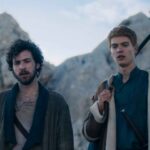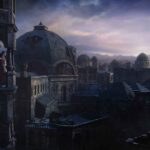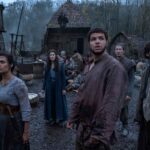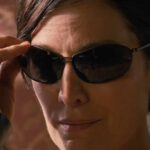In this weekly series, we chronicle the long road undertaken by the Marvel Cinematic Universe movies to arrive at Avengers: Infinity War. We introspect and discuss the movies from a critical and commercial standpoint while also considering the development efforts that went behind them. These articles may be occasionally sprinkled with spoilers so please make sure to skip the relevant sections when reading.
This post is about the 2015 movie Avengers: Age of Ultron, the eleventh chapter in the Marvel Cinematic Universe. To check out other entries in our Road to Infinity War series, click here.
It seemed like only yesterday that we got our first ever taste of what a crossover team-up movie in the Marvel Cinematic Universe would feel like. And turns out, it felt great as The Avengers proved with $1.6 billion at the box-office and mostly glowing reviews. Three years on, we were on the verge of seeing a sequel to this team-up movie grace the big-screen. One that would see all core six Avengers return along with a new pair of enhanced characters, new threats, and cameos new and old alike to both delve into some of the characters’ backstories and also to set up future films. The sequel to The Avengers was set smack in the middle of the ongoing MCU saga and had the arduous task of topping its predecessor, teasing plot elements for upcoming films in quintessential Marvel tradition and lastly but most importantly, tell its own story. It seemed like a monumental feat to accomplish and any director worth his salt would’ve known that with so much riding on it, the movie was bound to crack under the weight of its own expectations.
And that’s precisely what happened with Avengers: Age of Ultron. With too many personalities and subplots stuffed in, it was incredibly hard to pull off a film that would satisfyingly tell a coherent story without sacrificing the narrative somewhere. Both critics and audiences felt the mishmash nature of director-writer Joss Whedon’s screenplay and largely came out somewhat flustered. As happens with most sequels to a greatly received movie, no amount of marketing or genius storytelling was going to be enough to top the phenomenon that was The Avengers. But Whedon definitely tried, and he tried hard to not only inject the movie with oozes of wit and charm but amplify those aspects and make it more affable to audiences. He added neat references, pop-culture throwbacks and callbacks to the MCU built up to that point. He gave Shakespearean dialogue to an antagonist which in the eyes of many was just a mean old-fashioned robot. But somewhere, somehow it didn’t resonate with critics and hit the right note with audiences who came anticipating a spectacle as unique as The Avengers but instead, got a sequel that tried too hard to top its predecessor but failed. It was a great spectacle, sure but just that. It fell short of being an experience.
For the longest time, I actually shared this opinion myself. On the first viewing, Age of Ultron definitely did not leave the same lasting impact that The Avengers did. And while I supposed it was understandable since The Avengers was practically the first time anyone was attempting anything of this sort (at least at this scale), the flow of Age of Ultron just didn’t feel right. The great thing about movies though is that unlike life-events, you can actually re-watch them to gain a deeper understanding and broaden your sense of what the movie was about. And I’m not hesitant to say that subsequent re-watches have only improved my opinion of and respect for the movie, with each consequent re-watch adding more info and unveiling layers upon layers of dialogue buried under the surface that conveys a lot more than I was possibly able to glean in one sitting. In that sense, Age of Ultron is like old wine – the longer it stays, the better it tastes.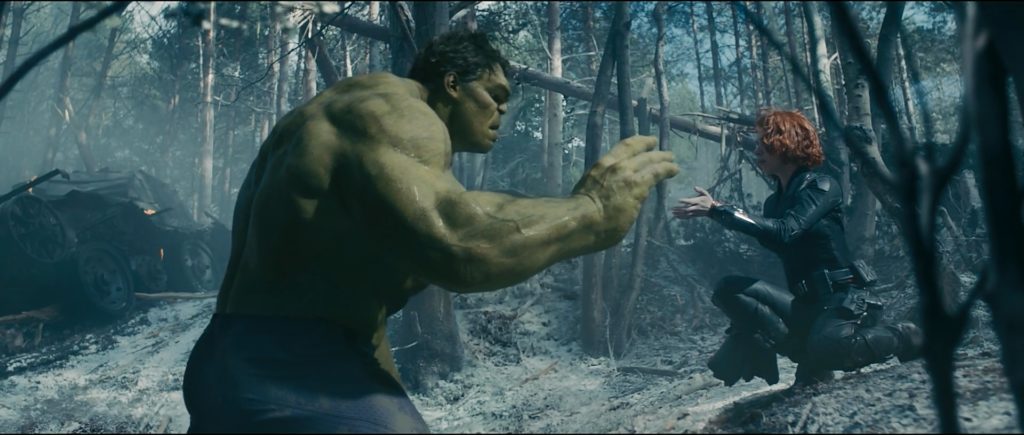 Most sequels are green-lit depending upon the original movie’s reception. With The Avengers though, it appears that Marvel Studios felt confident enough to begin considering and playing around with ideas for a potential sequel as early as 2011. While filming the first movie, Joss Whedon even expressed an interest in having the Avengers face off Ultron in a sequel, were it to happen. As word of mouth and tracking on The Avengers improved, chances of a sequel happening became stronger and stronger until in May 2012, Marvel officially announced one. Whedon was of course on board, not merely as the director and writer of the sequel but also as the chief architect and overseer of the entirety of Marvel’s Phase Two including a TV series named Agents of S.H.I.E.L.D. (which you might have heard of). By the end of that year, Whedon even had a draft ready and in the first half of 2013, pre-production was underway. Marvel Studios was confident enough in the movie coming through by its pre-announced May 1, 2015 release date and even released a short teaser unveiling the sequel’s title at 2013’s San Diego Comic Con.
Most sequels are green-lit depending upon the original movie’s reception. With The Avengers though, it appears that Marvel Studios felt confident enough to begin considering and playing around with ideas for a potential sequel as early as 2011. While filming the first movie, Joss Whedon even expressed an interest in having the Avengers face off Ultron in a sequel, were it to happen. As word of mouth and tracking on The Avengers improved, chances of a sequel happening became stronger and stronger until in May 2012, Marvel officially announced one. Whedon was of course on board, not merely as the director and writer of the sequel but also as the chief architect and overseer of the entirety of Marvel’s Phase Two including a TV series named Agents of S.H.I.E.L.D. (which you might have heard of). By the end of that year, Whedon even had a draft ready and in the first half of 2013, pre-production was underway. Marvel Studios was confident enough in the movie coming through by its pre-announced May 1, 2015 release date and even released a short teaser unveiling the sequel’s title at 2013’s San Diego Comic Con.
Most of 2013 was spent planning out the movie’s complicated schedule. Eventually, it began principal photography (a.k.a. shooting) in early February 2014 beginning with the the Hulkbuster v/s Hulk fight sequence before continuing across the globe from March to September. That year, another Comic Con trailer was released at SDCC 2014 to thunderous applause, this time with lots of new footage and scenes including the party sequence where the Avengers have some fun with Mjolnir. Later that year, Marvel planned on releasing an official trailer to the public with the October 28 episode of Agents of S.H.I.E.L.D. only for the trailer to be leaked ahead by a week, forcing Marvel to release it online in HD. Cheekily enough, the studio blamed HYDRA for the leak and the trailer garnered enough views and positive reception that the leak barely mattered. Another trailer followed later in March and the movie sailed towards its May 2015 release without any major hiccups in post-production and effects-work.
Stripped off of its shenanigans and distilled to its core, Age of Ultron leans on a fairly straightforward plot of an Artificial Intelligence powered robot hell bent on the destruction of humanity. But of course, a movie wouldn’t be a movie if that’s what we reduced all plots to. And so Whedon adds several layers of complexity to this basic plot, chief among which is the AI Ultron himself. That Ultron comes to fruition through the efforts of two of the Avengers Tony Stark and Bruce Banner themselves gives the threat another layer of texture for Joss to play around with. And why would you come up with an AI in the first place? To counter the lingering threat of aliens and other dangers to earth and avoid a repeat of past events such as the Battle of New York. And you can’t actually fault their rationale in a way. Having driven through space and witnessed the Chitauri ship firsthand when he rode a nuke to them, Stark has gained a defensive perspective, even suffering from PTSD in Iron Man 3. The next logical step he takes then is to ensure that there’s no problem to begin with and coerces his now-buddy Banner into joining him in his quest to bring in his own words, “peace in our time”.
That plan of course goes horribly wrong as soon as Ultron awakens. In little time, he develops a biased and skewed opinion of what’s wrong with the world and surmises that it’s the Avengers that drive and thrive upon conflict. They’re the ones that attract all the weird evils and monsters who wreak havoc upon the world and so, to achieve peace, it’s necessary to start with getting rid of them. Wasting no time, Ultron attacks the Avengers’ after party and after being countered by the team, escapes and plans bigger to take down a large number of people with the Avengers so that humanity can start from scratch and learn to evolve. Intending to cause an extinction level event, he joins forces with the twins Pietro Maximoff / Quicksilver and Wanda Maximoff / Scarlet Witch who, blinded by their personal vendetta against Stark, side with Ultron only to later on realize their folly and switch sides.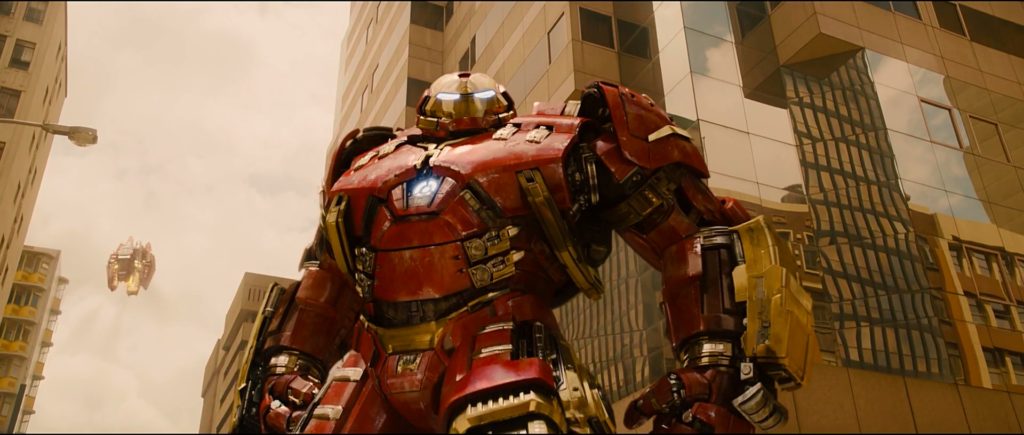 Even though it’s supposed to be a large-scale superhero action movie, Age of Ultron takes plenty of time to give its characters room to breathe. Two sequences in particular stand out in this regard. The first involves the Scarlet Witch getting inside the heads of the Avengers and messing with their minds, making them see their worst fears and twisted versions of their past. Stark sees a future where the Avengers are dead because he didn’t do enough. Rogers enters a twisted ballroom to have his dance with Peggy Carter and has visions of what he missed. Thor sees a vision for the end of the world which leads him to discovering what’s going on with the Infinity Stones. And Black Widow gets a peek into her dark origins and the training program which turned her into the cold assassin she started out as. It’s interesting stuff not just in terms of the revelations brought forward but in the way the nightmares are handled, with disorienting visuals and an almost eerie horror-movie feel to the edits. Not even Banner is spared as Wanda’s spells instantly bring out the worst in Banner and transforming him into a raging Hulk. Whedon described the resultant Hulk as the equivalent of Hulk hulking out. Stark has to call upon the Hulkbuster (nicknamed Veronica) to stop Banner from laying waste to the city.
Even though it’s supposed to be a large-scale superhero action movie, Age of Ultron takes plenty of time to give its characters room to breathe. Two sequences in particular stand out in this regard. The first involves the Scarlet Witch getting inside the heads of the Avengers and messing with their minds, making them see their worst fears and twisted versions of their past. Stark sees a future where the Avengers are dead because he didn’t do enough. Rogers enters a twisted ballroom to have his dance with Peggy Carter and has visions of what he missed. Thor sees a vision for the end of the world which leads him to discovering what’s going on with the Infinity Stones. And Black Widow gets a peek into her dark origins and the training program which turned her into the cold assassin she started out as. It’s interesting stuff not just in terms of the revelations brought forward but in the way the nightmares are handled, with disorienting visuals and an almost eerie horror-movie feel to the edits. Not even Banner is spared as Wanda’s spells instantly bring out the worst in Banner and transforming him into a raging Hulk. Whedon described the resultant Hulk as the equivalent of Hulk hulking out. Stark has to call upon the Hulkbuster (nicknamed Veronica) to stop Banner from laying waste to the city.
The second of these sequences follows the aforementioned sequence. After having gone through their nightmarish visions, the defeated and depressed Avengers seek refuge somewhere away from Stark Tower to avoid the limelight. Hawkeye comes to the rescue, taking them all to his “safe-house” – a home away in the woods with his family comprising of his pregnant wife and two children. It gives some great insight into Clint Barton who until this point, was one of the least known Avengers in the MCU, being severely limited in his role due to Loki’s mind-control act in The Avengers which rendered him a decoy for most of his screen time. We learn here how Barton has setup an alternate life with Fury’s help, and how he plans to retire after the fight with Ultron is done. We also learn more about Banner and Widow’s newfound romance as well as their fears, especially Banner’s who is at odds with the monstrosity that is a part of his personality. Both are overcome with guilt at the horrors they’ve unleashed and Widow suggests they run away after this madness ends and start afresh. Whedon smartly gives some of the stronger character moments to Black Widow, Bruce Banner and Hawkeye since all the main Avengers have had movies to develop them already. And Scarlett Johansson, Mark Ruffalo and Jeremy Renner own their respective roles and bring out a vulnerability in these iconic individuals that’s often found lacking in some of the more super-powered beings.
In lieu of shared rights with 20th Century Fox, Quicksilver and Scarlet Witch are no longer the X-Men. Instead, they get their own backstory which Whedon connects to the Avengers by making Stark’s weapons responsible for killing their parents. Lost in transit, the twins volunteer to undergo mutation experiments by Baron Wolfgang Von Strucker who gives them enhanced abilities, which they use to get back at Stark and the Avengers, only to later on side with them once Wanda is able to foresee what Ultron has in mind. You’d do well to read the prequel comic This Scepter’d Isle that explains the twins’ origins in more detail. Their powers give the movie a newfound sense of kinetic energy although I wish Whedon had given them even more screentime. The two had a good deleted scene or two elaborating on their shared camaraderie that ought to have been left in for good measure.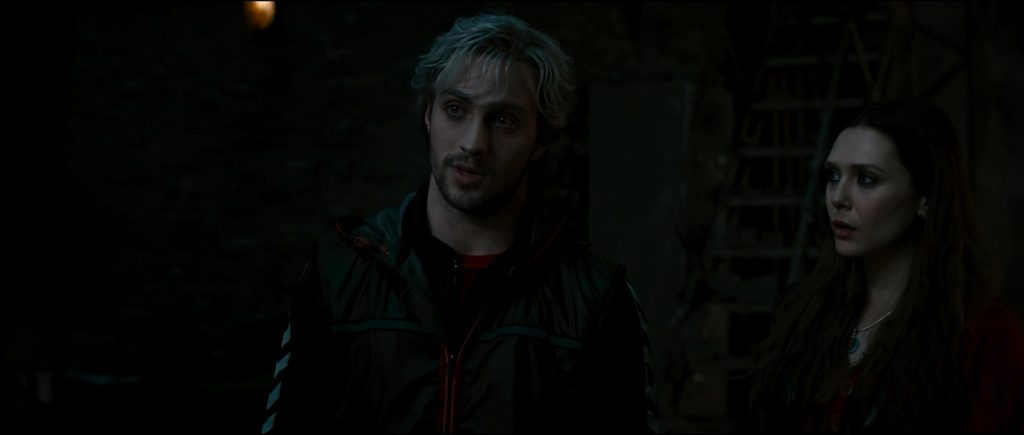
Then again, Whedon could not have done much in this regard. He was reportedly at loggerheads with the studio executives over the movie’s run time and wanted a longer movie with some sequences expanded. One of the subplots Whedon wished he could’ve kept in his entirety is Thor’s pursuit of learning more about his apocalyptic vision, a sequence which involved him reaching out to the Norns to return back to the dream that Wanda makes him see. Marvel was adamant on cutting down the running time and gave Whedon a choice – it was either Hawkeye’s scenes or Thor’s. Whedon chose to keep Hawkeye’s which is probably why you see Thor’s cuts play out a bit jarringly than you’d expect. Those were the days when Marvel Studios sorta operated like Warner Bros. did with its Justice League movie and I’m sure many fans are glad that those days are behind us. That the movie turned out the way it did despite the excessive studio interference is nothing short of a miracle.
Somewhat refreshingly, Age of Ultron does not restrict the storyline to New York or even the US and creates an event that has global ramifications. The plot ends up spanning a multitude of locations all over – from South Africa and Oslo to Seoul and Sokovia. There’s even mention of Wakanda and Black Panther foe Ulysses Klaue starts off his MCU journey in this movie in a pivotal sequence. You get the sense that the Avengers are a global entity which is something as a fan I’ve yearned for seeing increasingly more. And the resultant action sequences are a mix of bland and impressive; while they make terrific use of the locations and the environment which lends them an authenticity that green screens just couldn’t replicate, they lack a sense of imagination in many cases that tends to seep in when you’ve either seen or made too many movies of the same type. Even so, there is some impressive action bits to be had and a lot of these can be found in the extended opening prologue that sees the Avengers invade the HYDRA base in Sokovia to retrieve Loki’s scepter. And how on earth did the scepter end up with Baron Von Strucker? Again, reading the prequel comic is what I’d suggest.
Whedon chose to film the movie in the standard anamorphic format as opposed to the 1.85:1 aspect ratio used for The Avengers. While his reasoning behind this is unknown, I suspect it could have to do with Marvel Studios wanting to employ some sort of uniformity in how its movies look, feel and even play out. That last part has been quite controversial among critics who’ve begun to complain how all Marvel movies feel the same and to a certain extent, at least structurally, that holds true for Age of Ultron as well. You can smell the sepia-toned color palette that is so heavily infused throughout the movie against the bright textures of the first Avengers, or even the first Iron Man. However in the pandemonium of noises threatening to interfere with the movie’s cut, Whedon does manage to find his voice and add some personality to the proceedings. Perhaps nowhere is this more evident than in the writing for the titular Ultron, who not only speaks a lot like an 18th Century English Scholar but also displays a wide range of traits including anger, sadness, empathy, humor and most of all rage and derision for his creator, Stark. Clearly Ultron’s core DNA has a lot of similarities with Stark and all of these touches prevent Ultron from becoming the monotonous megalomaniac robot that he’s generally viewed as.
For anyone who’s complained about Marvel music sounding dull, generic and unnecessary, this movie will not only reinforce their claims but give them plenty of material to base a documentary on. Take out Alan Silvestri’s classic themes for The Avengers and Brian Tyler’s soothing melody to cement the relationship between Natasha and Banner and there’s nothing left. Every other score or track is instantly forgettable and I don’t remember a single note other than the ones I mentioned. Danny Elfman was famously brought in to spruce up the main Avengers theme and a big deal was made out of it during promotions but really, it’s nothing. In fact, Elfman’s recent track record scoring superhero movies suggests he ought to retire from the genre and take up something else.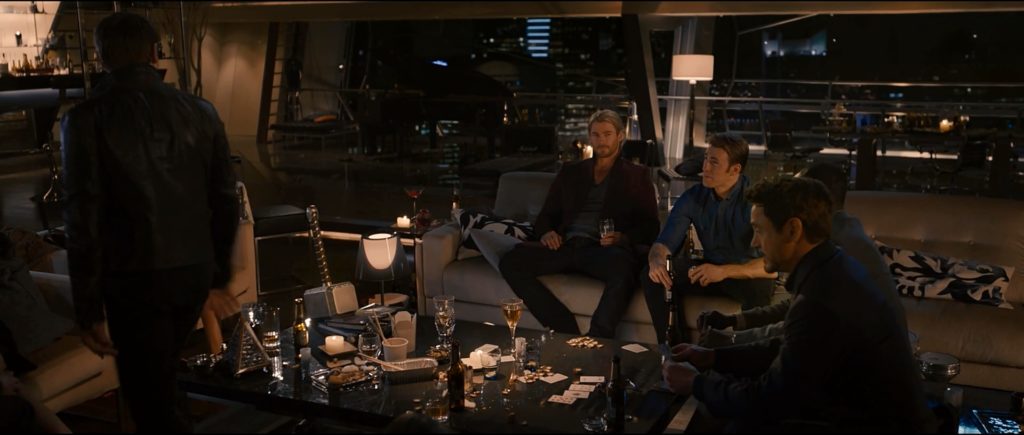 What you also won’t get, and shouldn’t expect, from Age of Ultron is any sort of commentary about the dangers or ethical issues involved with creating AI. This is no Ex Machina and neither is it Terminator 2: Judgment Day and it’s definitely no Artificial Intelligence. Sure Ultron is a wisecracking sharp machine and James Spader hits all the right notes with his performance making Ultron sound every bit as menacing as he should, but Whedon offers little in terms of any ambiguity or debates about the potential impact of Stark creating something that’s out to destroy them. There’s some bits that come close with the Vision’s birth sequence, especially his reasoning for choosing his side but if you’re expecting some philosophical debates about Stark’s zaniness, the robot creating and upgrading itself essentially reproducing asexually or anything on those lines, prepare to be disappointed. Age of Ultron fulfills the role of a traditional blockbuster in this regard by sticking to talking about its MCU connections and expanded action sequences than delving into discussions that would serve no merit to this shared universe.
What you also won’t get, and shouldn’t expect, from Age of Ultron is any sort of commentary about the dangers or ethical issues involved with creating AI. This is no Ex Machina and neither is it Terminator 2: Judgment Day and it’s definitely no Artificial Intelligence. Sure Ultron is a wisecracking sharp machine and James Spader hits all the right notes with his performance making Ultron sound every bit as menacing as he should, but Whedon offers little in terms of any ambiguity or debates about the potential impact of Stark creating something that’s out to destroy them. There’s some bits that come close with the Vision’s birth sequence, especially his reasoning for choosing his side but if you’re expecting some philosophical debates about Stark’s zaniness, the robot creating and upgrading itself essentially reproducing asexually or anything on those lines, prepare to be disappointed. Age of Ultron fulfills the role of a traditional blockbuster in this regard by sticking to talking about its MCU connections and expanded action sequences than delving into discussions that would serve no merit to this shared universe.
Avengers: Age of Ultron did manage quite well at the box-office. With a $191 million domestic opening weekend, it went on to gross $409 million in the United States alone and $1.4 billion worldwide. That was far less than the $659 million or so made by the first Avengers but as pointed out, it was largely because the first movie was an event whereas the second was a sequel. Critics gave it mixed to favorable reviews although it ends up with cumulative scores that most movies would be envious of. Even so, the relationship between the sequel and its prequel is more akin to one between Nolan’s The Dark Knight Rises and The Dark Knight than the one between X-Men: The Last Stand and X2: X-Men United. Meaning, for all its flaws, Age of Ultron is a fine movie that stands tall on its own and adds a commendable, if not outstanding installment to Marvel’s archives. Kevin Feige would definitely be proud.
That basically leaves us with just one movie to go before Phase Two winds up. And things are about to get smaller. Real smaller.

